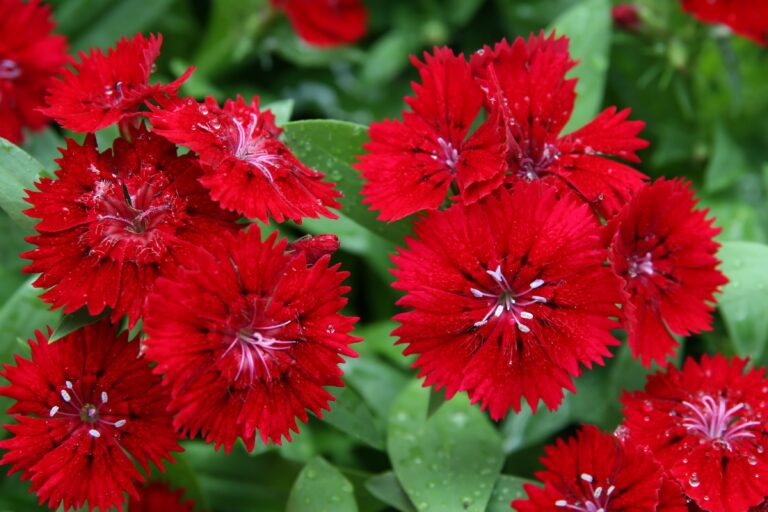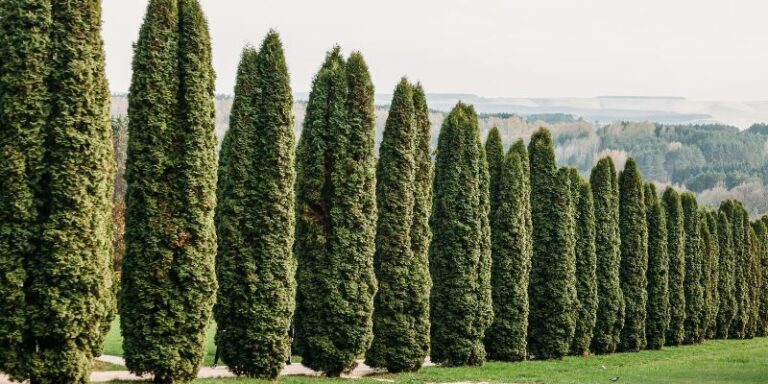Lawn Edging Mastery: Top Models for Perfect Borders
Table of Contents
Top Models for Lawn Edging
When it comes to choosing the top models for lawn edging, there are several options available in the market that cater to different needs and aesthetics. One popular choice is the classic plastic landscape edging, which is affordable, easy to install, and comes in various colors and styles to complement any garden design. Another model gaining popularity is the metal landscape edging, known for its durability and sleek appearance that adds a modern touch to outdoor spaces.
For those looking for a more natural look, consider opting for stone or brick landscape edging, which blends seamlessly with garden elements and provides a timeless appeal. These sturdy materials are not only aesthetically pleasing but also offer long-lasting performance in withstanding environmental factors. Additionally, concrete landscape edging is a versatile option that can be customized to fit any shape or size, making it ideal for creating unique border designs that enhance the overall look of your lawn.

Choosing the Right Material for Your Borders
When it comes to choosing the right material for your borders, it’s essential to consider both functionality and aesthetics. One popular option is plastic lawn edging, which is affordable, easy to install, and comes in various colors and styles to complement your landscaping. Plastic edging is also flexible, making it ideal for curved borders or intricate designs. However, keep in mind that plastic may degrade over time due to exposure to sunlight and harsh weather conditions.
Another common choice for borders is metal edging, such as aluminum or steel. Metal edging provides a sleek and modern look to your landscaping while offering durability and strength. It is excellent for creating clean lines and defining the edges of your lawn or garden beds. On the downside, metal edging can be more expensive than plastic and may require more effort to install. Additionally, some metal materials may rust over time, impacting their longevity.
Benefits of Proper Lawn Edging
Proper lawn edging offers a myriad of benefits that go beyond mere aesthetics. One of the key advantages is the prevention of grass encroachment, which can help maintain the neat and tidy appearance of your lawn borders. By creating a distinct separation between your grass and surrounding pathways or flower beds, you can effectively contain the growth of grass roots and prevent them from infiltrating unwanted areas. This not only enhances the overall look of your garden but also reduces the amount of time and effort needed for regular maintenance.
Moreover, proper lawn edging can act as a barrier against weeds, helping to impede their spread and growth within your garden space. By installing a well-defined edge, you create a physical obstacle that inhibits weeds from creeping into your carefully cultivated flower beds or manicured lawns. This can significantly reduce the need for herbicides or manual weeding, resulting in a more environmentally friendly and sustainable approach to garden upkeep. Additionally, the clear demarcation provided by edging can streamline mowing and trimming tasks, making it easier to maintain your lawn and ensuring a pristine and polished appearance.

How to Measure and Plan Your Edging Project
When embarking on a lawn edging project, it is essential to start by accurately measuring the area you plan to edge. Begin by outlining the perimeter of your lawn with a garden hose or string to visualize the desired border. Once you have a clear idea of the shape and size of the area to be edged, use a measuring tape to determine the total length of the border. Be sure to account for any curves or corners in your design, adding a little extra length to accommodate for these features.
After measuring the length of the border, calculate the amount of edging material needed for your project. Most lawn edging materials are sold in linear feet or meters, so knowing the total length of your border will help you estimate the quantity required. Consider the height and width of the edging material you choose, as this will also impact the amount needed for the project. It is always a good idea to buy a little extra material to account for any mistakes or unexpected changes during installation.
Popular Styles of Lawn Edging
When it comes to popular styles of lawn edging, there are several options to choose from to enhance the look of your landscaping. One common choice is the traditional plastic edging, which is affordable, easy to install, and comes in various colors and designs to suit your preferences. Plastic lawn edging is versatile and can be curved or straight to create clean boundaries for your flower beds or walkways.
For a more natural look, consider using stone or brick edging to add a rustic charm to your garden. Stone or brick edging is durable and can withstand harsh weather conditions, making it a long-lasting choice for your landscape borders. These materials can be stacked or laid out in different patterns to create a unique and timeless appeal to your outdoor spaces.
Tips for Installing Plastic Lawn Edging
For a successful installation of plastic lawn edging, it is crucial to start by preparing the area where the edging will be placed. Clear any debris, rocks, or vegetation along the border to ensure a smooth surface for the edging to be laid down. It is essential to measure the length of the area where you plan to install the plastic lawn edging accurately. This will help you determine the amount of edging material required for the project. Additionally, using a string or hose to outline the border can help you visualize the placement of the edging before installation.
When installing the plastic lawn edging, make sure to secure it firmly into the ground to prevent shifting or movement over time. Utilizing installation spikes or stakes can help anchor the edging securely in place. Additionally, consider overlapping the ends of the edging pieces by a few inches to create a seamless and secure connection. Lastly, use a rubber mallet to gently tap the edging into the ground to ensure it is level and properly aligned along the border of your lawn.
Here are some tips for installing plastic lawn edging in a tabular form:
| Step | Description |
| 1 | Measure the Outline: Lay out a piece of rope around the garden bed where you plan to install the edging. Measure the rope to determine how much edging you’ll need. Plastic lawn edging is commonly sold in 20 ft (6.1 m) lengths. The height of plastic lawn edging varies across brands, typically ranging from 3–6 in (7.6–15.2 cm) high. Choose the appropriate height based on your needs. |
| 2 | Unroll and Prepare: Unroll the plastic lawn edging the day before you want to use it. If possible, leave it in the sun to warm up and make it easier to shape. |
| 3 | Dig a Trench: Use a shovel to dig a 3–6 in (7.6–15.2 cm) deep trench around the garden bed. The width of the trench should be slightly larger than the width of the edging. Make sure the edging doesn’t stick up too much to avoid damage from lawn mowers. |
| 4 | Remove Roots: Cut off any small roots that are in the way of the trench. Leave large tree roots as they’ll be easier to accommodate when installing the edging. |
| 5 | Insert Edging: Place the plastic edging in the trench, with the rounded part facing the plants. Secure it with stakes or spikes every five feet or as needed. |
| 6 | Backfill and Enjoy: Fill the trench with soil, push stones or mulch back to the edge of the edging, and enjoy the finished look! |
Remember to choose the right height for your plastic lawn edging and follow these steps for a neat and tidy garden bed.
Pros and Cons of Metal Lawn Edging
Metal lawn edging offers several benefits for your landscaping needs. Its durability and strength make it a long-lasting option that can withstand various weather conditions. Additionally, metal edging provides a clean and precise border that enhances the appearance of your lawn. With minimal maintenance required, it can be a convenient choice for homeowners looking for a low-maintenance edging solution.
On the flip side, one drawback of metal lawn edging is its potential for rust over time, especially if not properly treated or maintained. Rust can detract from the aesthetic appeal of your landscaping. Additionally, metal edging can be more difficult to install compared to other materials, requiring tools and expertise for a professional finish. While it offers durability, the initial investment and installation process may be higher than other edging options.
Here are the pros and cons of metal lawn edging presented in a tabular form:
| Pros | Cons |
| Durable and strong | Not highly decorative |
| Long-lasting | Untreated steel edging may rust |
| Maintenance-free | Higher installation costs |
| Easy to shape and install | Regular maintenance required |
| Clean and unobtrusive appearance | |
| Fits into different landscape styles |
Creative Ideas for Unique Border Designs
Enhancing the look of your garden borders can truly elevate the overall aesthetic of your outdoor space. Consider incorporating colorful succulents like Echeveria or Sedum into your border design for a striking and low-maintenance option. These drought-tolerant plants come in a variety of hues and textures, adding visual interest to your garden edges.
For a more formal and structured appearance, opt for neatly trimmed boxwood or dwarf hedges to create a clean and classic border design. These evergreen shrubs provide a timeless appeal and can be shaped into geometric patterns or simple straight lines to define the edges of your flower beds or pathways. Additionally, boxwoods are known for their resilience and adaptability to various growing conditions, making them an excellent choice for creating well-defined borders in your garden.
Maintaining Your Lawn Edging for Longevity
Regular maintenance is key to preserving the longevity of your lawn edging. Start by inspecting your edging for any signs of damage, such as cracks or shifts in position. Address any issues promptly to prevent further deterioration. Additionally, keeping the edges clean and free from debris will help maintain the aesthetic appeal and functionality of your edging.
Another important aspect of maintaining lawn edging for longevity is periodic resealing or repainting, depending on the material used. This will help protect the edging from weather elements and extend its lifespan. Additionally, consider applying a layer of protective sealant to further guard against moisture and UV damage. By staying proactive with maintenance tasks, you can ensure that your lawn edging remains in top condition for years to come.
DIY vs Professional Lawn Edging Installation
When it comes to lawn edging installation, the decision between opting for a do-it-yourself (DIY) approach or hiring a professional service can depend on various factors. DIY lawn edging installation can be a cost-effective option for those who enjoy hands-on projects and have the necessary time and skills. It allows homeowners to have full control over the process, from selecting the materials to shaping the borders according to their preferences.
On the other hand, opting for professional lawn edging installation can save time and effort for individuals who may not have the expertise or physical capabilities to undertake the project themselves. Professionals bring experience and specialized tools to ensure precise and efficient installation, resulting in a clean and polished look for your landscaping. Additionally, hiring experts can provide peace of mind knowing that the edging is correctly installed, increasing the longevity and functionality of the borders.
Eco-Friendly Options for Sustainable Landscaping
When it comes to sustainable landscaping, choosing eco-friendly options for your lawn edging is a crucial step in minimizing the environmental impact of your outdoor space. One top choice for eco-conscious gardeners is using recycled plastic or rubber edging materials. These recycled options not only help divert waste from landfills but also provide a durable and functional border for your lawn or garden beds.
Another eco-friendly option to consider is using natural materials such as wood or stone for your lawn edging. These materials blend seamlessly into outdoor environments and offer a charming, rustic look while reducing the need for new resources to be harvested. Additionally, natural options like wood can be sourced from sustainably managed forests, further enhancing the sustainability of your landscaping choices.

Enhancing Curb Appeal with Well-Defined Borders
To create a visually appealing and well-coordinated landscape, it’s essential to pay attention to the borders of your lawn. Well-defined borders not only enhance the overall curb appeal of your property but also provide a sense of structure and organization to your outdoor space. By carefully selecting and installing the right lawn edging, you can achieve a polished and cohesive look that highlights the beauty of your plants and hardscaping elements.
Well-defined borders serve as a frame for your lawn and garden, drawing the eye to the vibrant colors and textures of your plantings. By delineating specific areas within your landscape, such as flower beds, pathways, and play areas, you can create a sense of order and balance that contributes to a harmonious outdoor environment. Whether you prefer a clean and modern look with sleek metal or plastic edging or a more natural aesthetic with rustic stone or wood borders, the key is to choose materials that complement the style of your home and garden while providing a practical solution for containing soil, mulch, and gravel.
Troubleshooting Common Lawn Edging Issues
One common issue that many gardeners encounter with lawn edging is the occurrence of gaps between the edging material and the ground. These gaps not only detract from the aesthetics of the landscape but can also allow grass and weeds to infiltrate the designated borders. To address this problem, ensure that the edging material is properly installed at the correct depth and angle. Additionally, consider using additional stakes or fasteners to secure the edging in place and prevent shifting that may lead to gaps over time.
Another troublesome situation that may arise when dealing with lawn edging is the warping or bending of the edging material. This can occur due to changes in temperature, moisture levels, or inadequate support along the border. To combat this issue, opt for more durable and flexible edging materials such as rubber or composite options that are less prone to warping. Regularly inspect the edging and make adjustments as needed to maintain its structural integrity and keep the borders looking neat and tidy.
Innovative Tools for Effortless Edging
For gardeners looking to streamline their lawn edging tasks, innovative tools offer a convenient solution. Electric lawn edgers are a popular choice among enthusiasts for their efficiency and ease of use. With precise cutting capabilities, these tools make achieving clean and professional-looking edges a breeze. Additionally, battery-powered edgers provide the flexibility of cordless operation, allowing users to move freely without being constrained by cords or cables.
Another handy tool for effortless edging is the rotary lawn edger, which features a rotating blade that swiftly trims grass along borders and pathways. This tool is ideal for maintaining neat and tidy edges with minimal effort. In addition, manual edging shears equipped with sharp blades and comfortable handles offer a traditional yet effective way to define borders with precision. By utilizing these innovative tools, gardeners can achieve polished edge lines and enhance the overall visual appeal of their outdoor spaces.

Budget-Friendly Alternatives to Traditional Edging Materials
When looking for budget-friendly alternatives to traditional edging materials for your lawn, consider utilizing recycled rubber or composite materials. These options offer durability and flexibility at a lower cost compared to natural stone or metal edging. Recycled rubber edging provides a sustainable solution as it is made from discarded tires, while composite materials blend plastic and wood fibers to create a sturdy border that mimics the appearance of natural wood without the hefty price tag.
Another cost-effective choice for lawn edging is using concrete pavers or bricks. These materials are widely available and can be arranged in various patterns to create a custom look for your landscaping. Concrete pavers are durable and long-lasting, offering a practical solution for edging that won’t break the bank. Bricks, whether new or salvaged, provide a classic aesthetic that adds charm to your lawn borders without compromising on quality. Consider these affordable alternatives to achieve well-defined edges for your outdoor spaces without overspending.
To Know More About Lawn Edging Mastery, Watch This Video!
Are there any natural materials that can be used for lawn edging?
Yes, natural materials like wood logs, stones, or even plants can be used as budget-friendly alternatives to traditional edging materials.
How can I prevent grass from growing over my lawn edging?
To prevent grass from growing over your lawn edging, you can regularly trim the edges, use edging with a barrier to block grass roots, or apply a grass barrier fabric underneath the edging.
Can I reuse old materials for lawn edging?
Yes, you can repurpose old materials like bricks, tiles, or even old tires for lawn edging to create a unique and budget-friendly border for your garden.
Is it possible to create curved borders with budget-friendly edging materials?
Yes, you can easily create curved borders using flexible plastic or metal lawn edging materials that are budget-friendly and easy to install.
How can I add a decorative touch to my lawn edging on a budget?
You can add a decorative touch to your lawn edging by painting or staining wooden edging, using colorful stones or pebbles, or incorporating creative patterns with inexpensive materials like recycled glass bottles or seashells.






